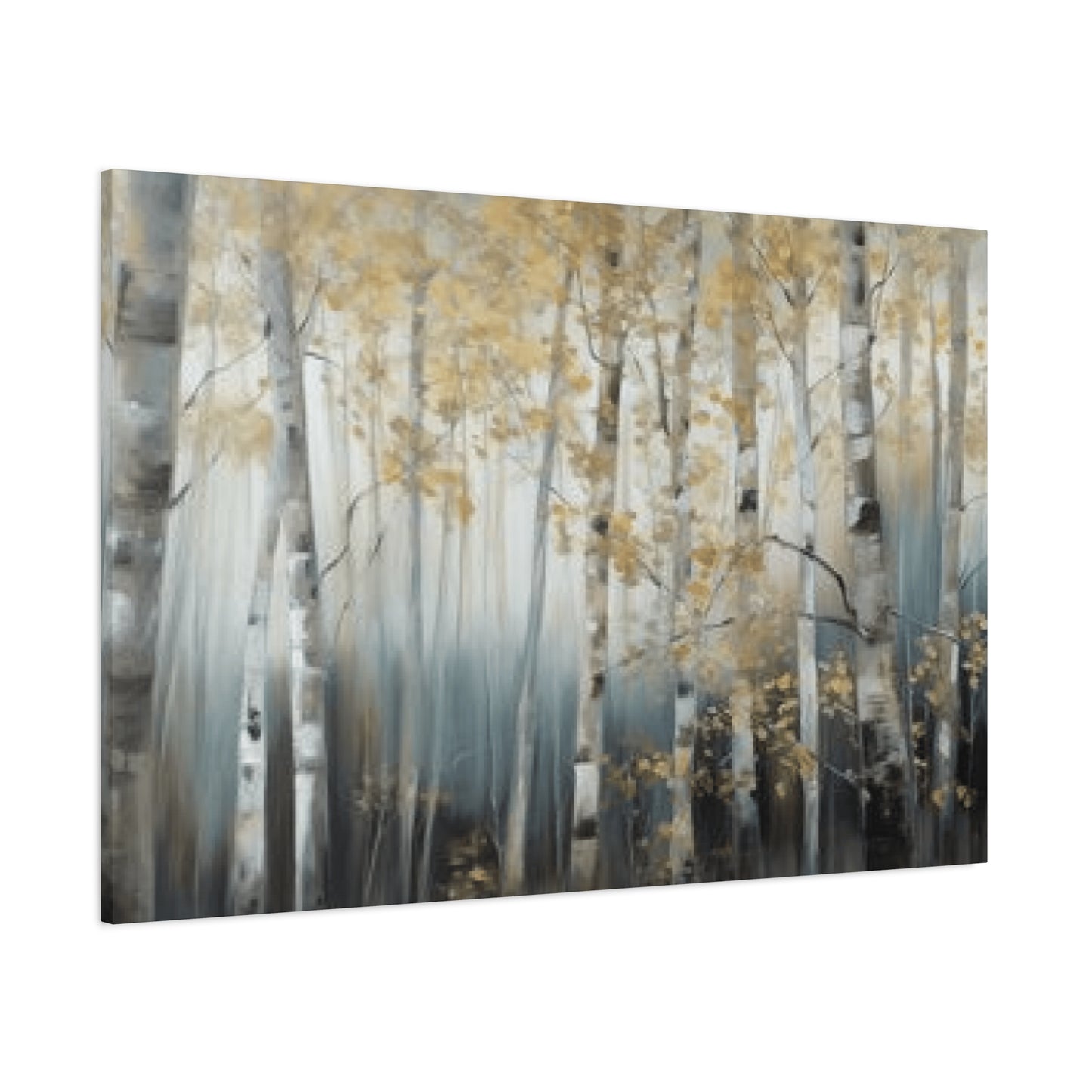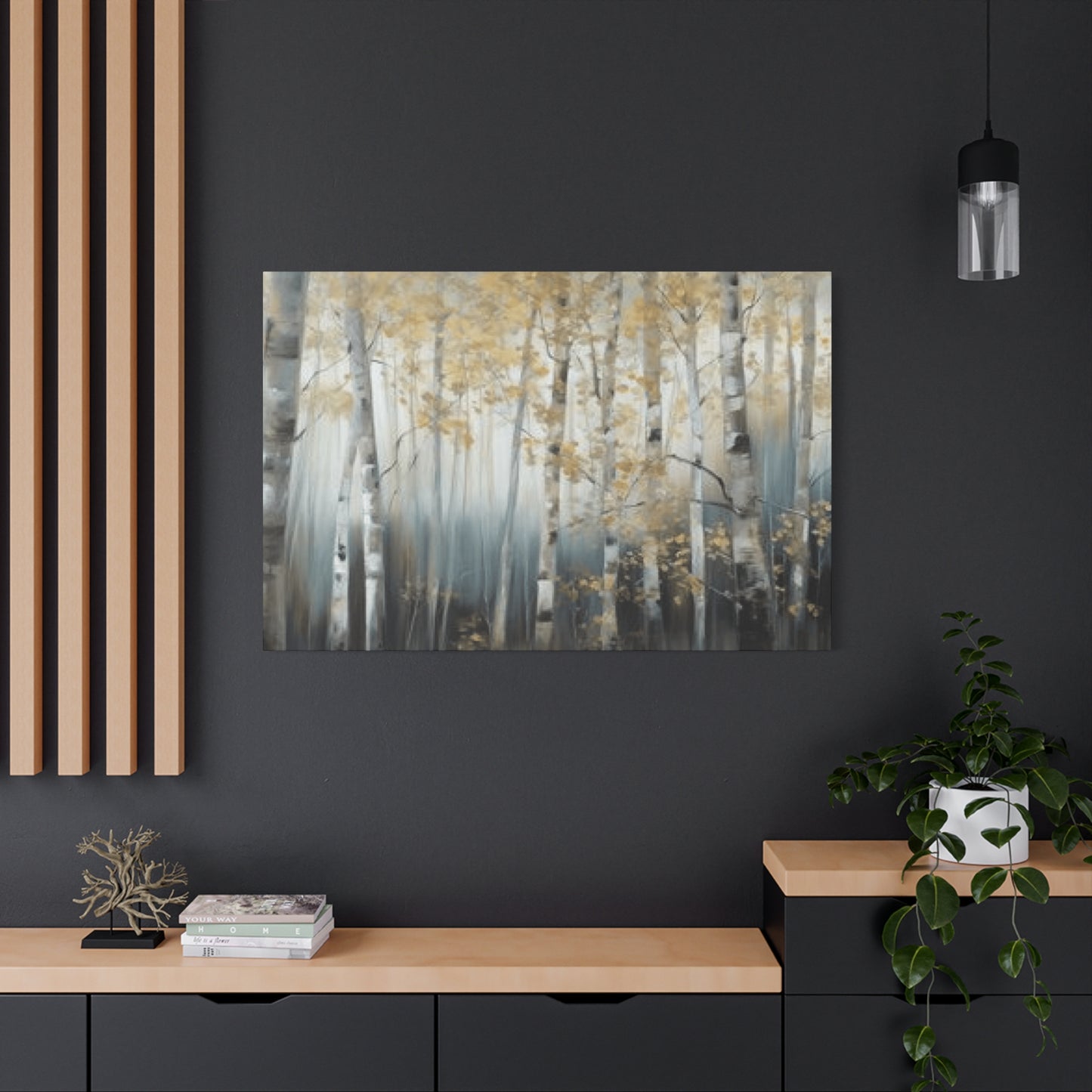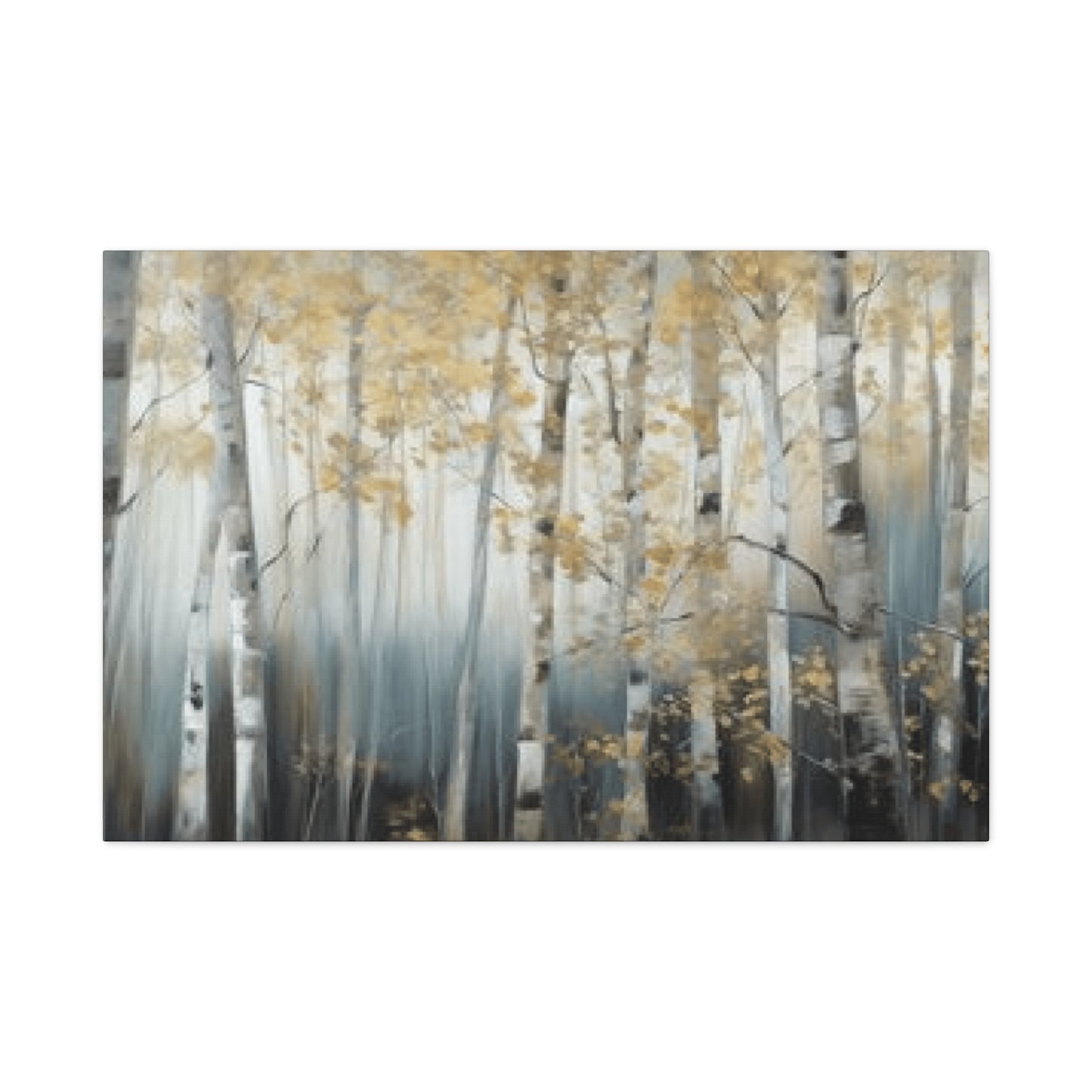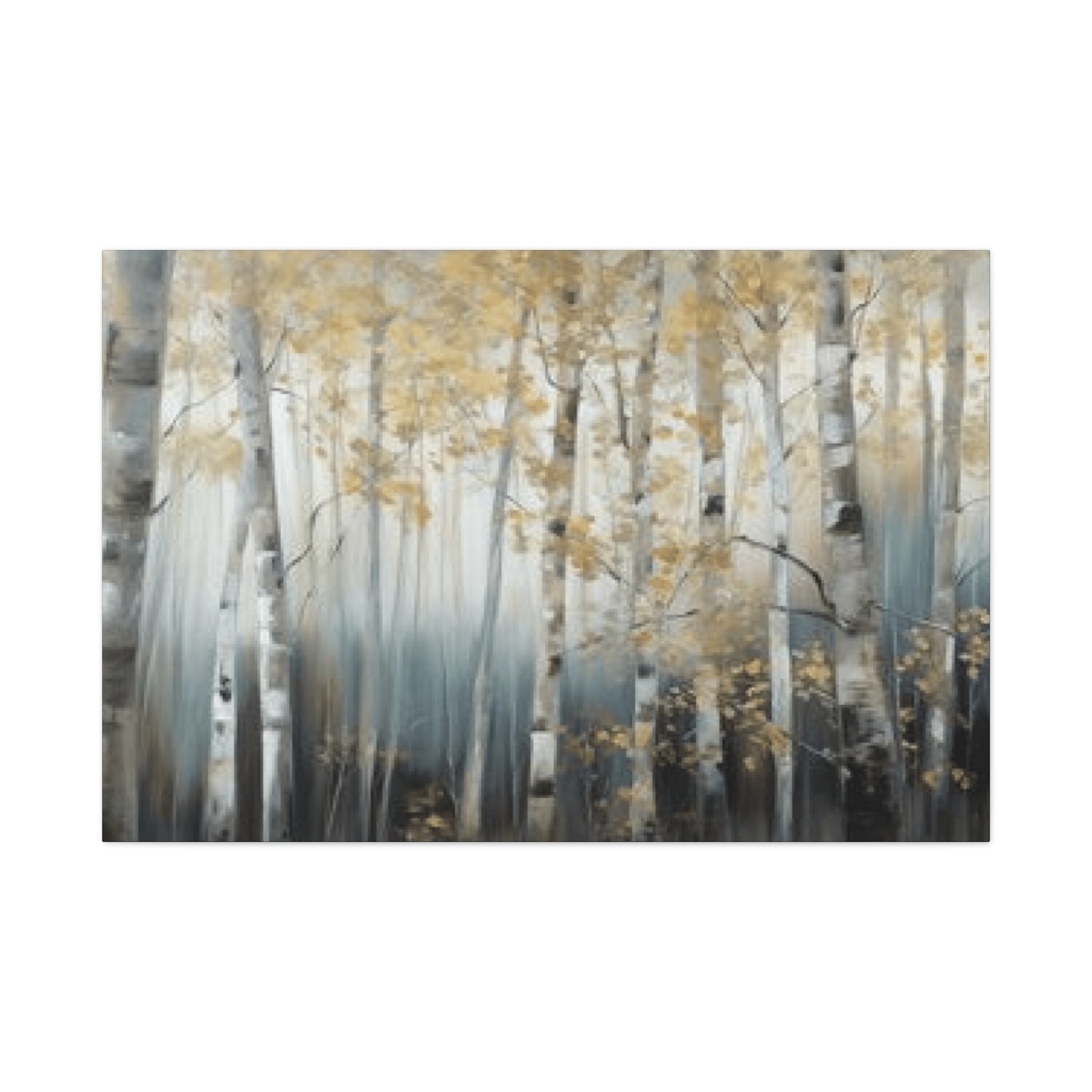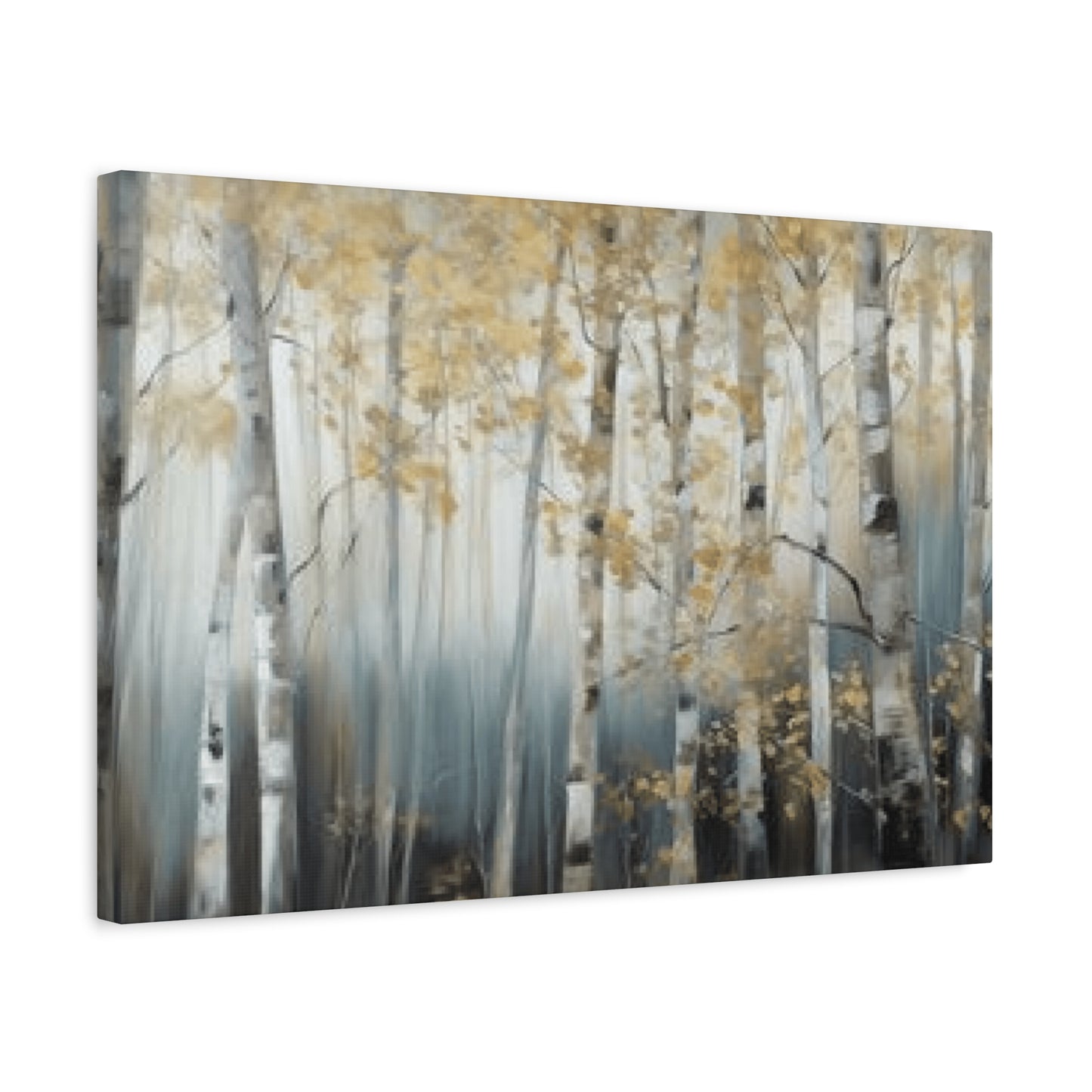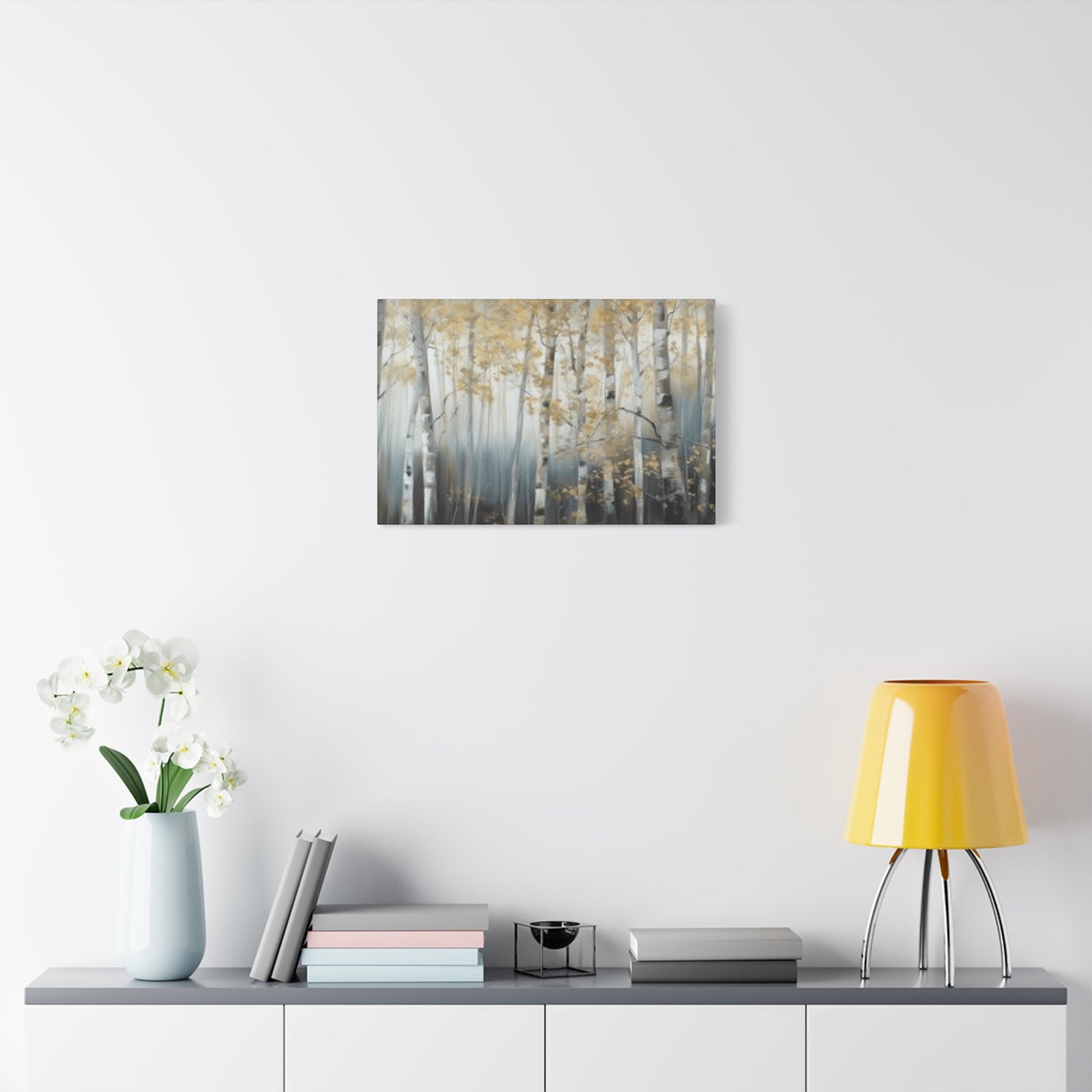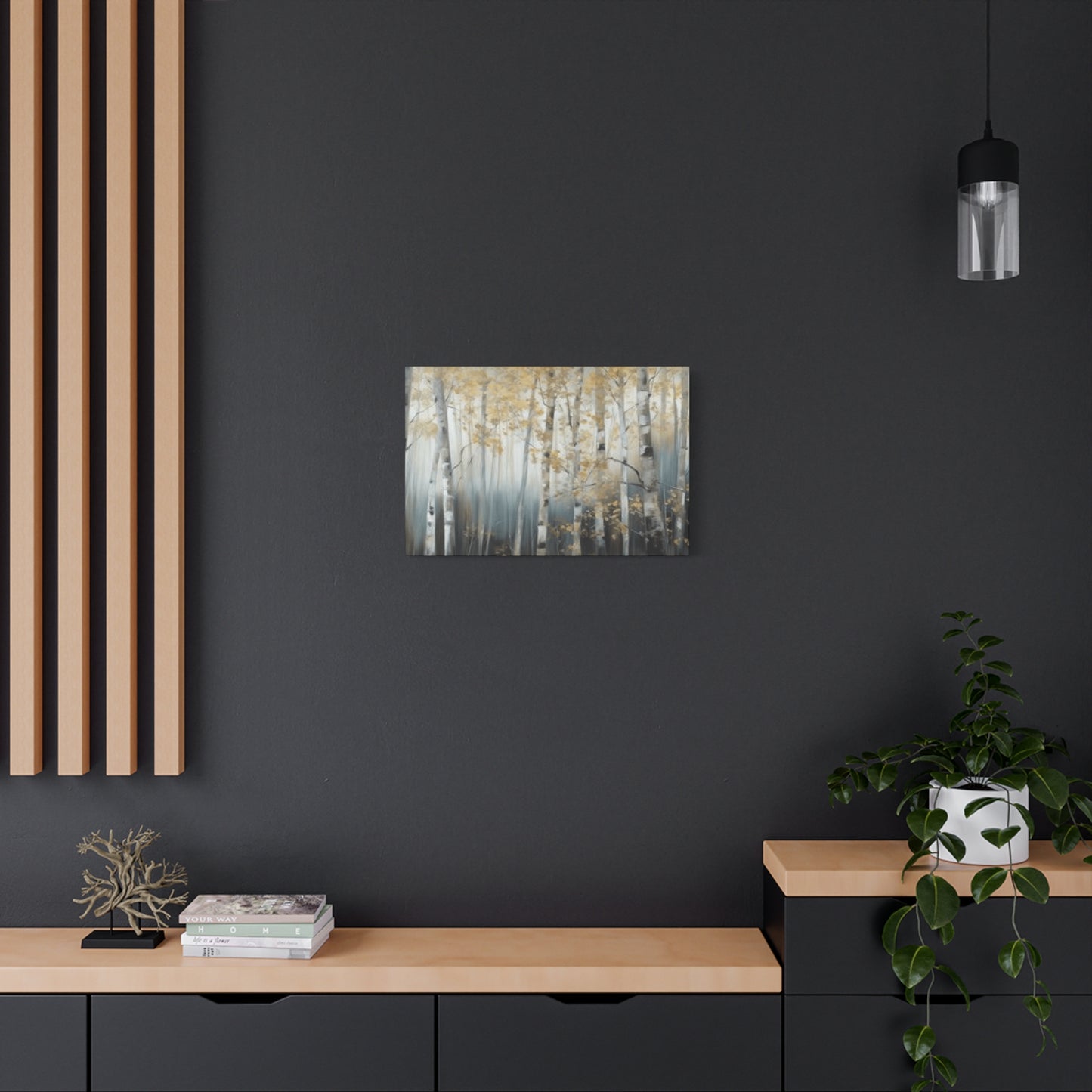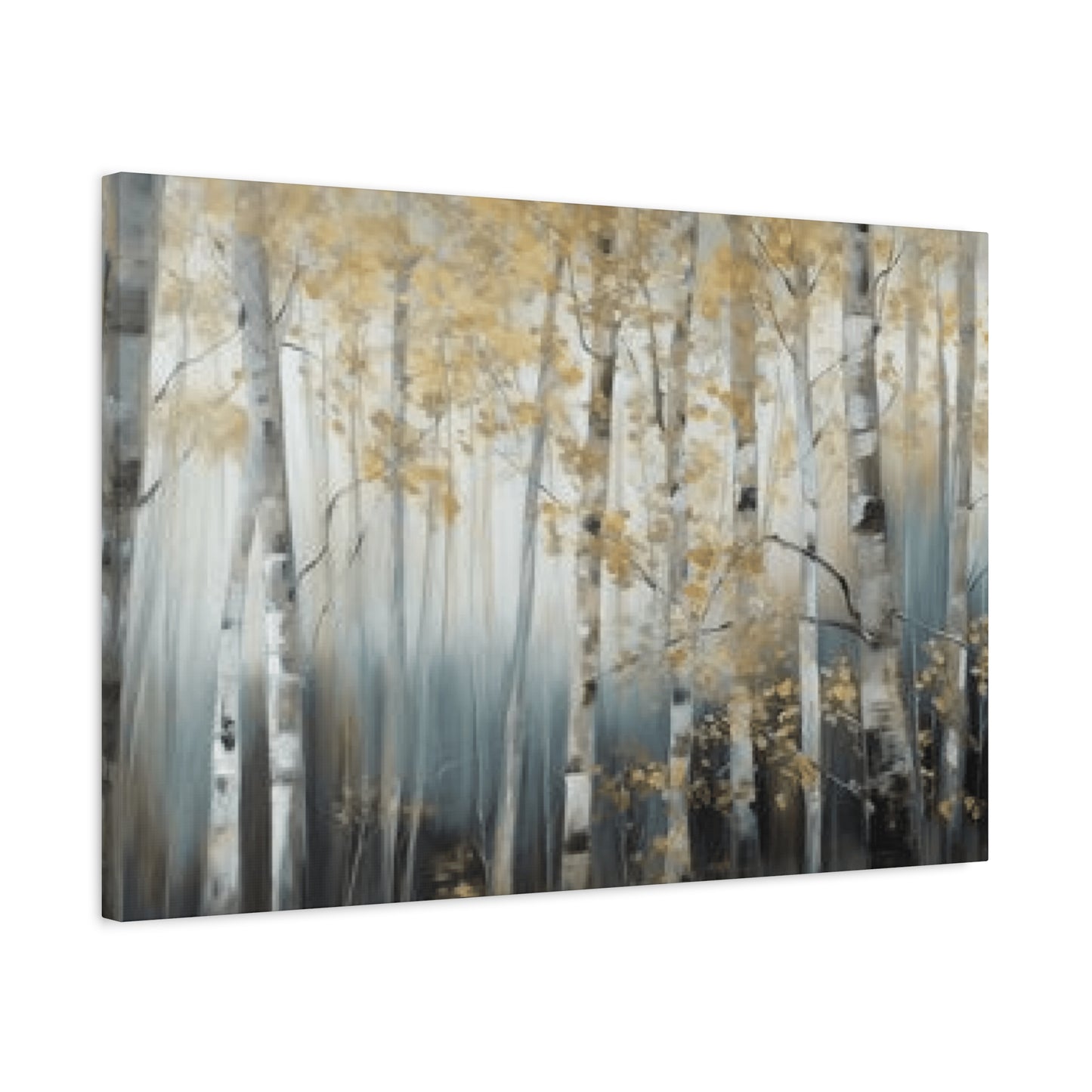Celebrating Natural Magnificence: The Timeless Appeal of Birch Tree Wall Art in Modern Interior Design
The incorporation of botanical elements into residential and commercial spaces has experienced a remarkable renaissance in contemporary interior design. Among the vast array of nature-inspired artistic expressions, imagery featuring these distinctive white-barked trees stands as a testament to the enduring connection between human habitats and the natural world. This comprehensive exploration delves into the multifaceted dimensions of incorporating these majestic woodland specimens into your living environment through carefully curated visual presentations.
Captivating Perspectives: Intimate Views of White-Barked Woodland Giants for Discerning Enthusiasts
The intimate portrayal of these elegant deciduous trees offers an extraordinary opportunity to bring the tranquility of forested landscapes directly into your personal sanctuary. These detailed representations showcase the intricate textures and patterns that characterize these remarkable specimens, revealing details often overlooked during casual woodland walks. The distinctive papery bark, with its characteristic horizontal markings known as lenticels, creates a visual rhythm that captivates viewers and draws them into contemplative observation.
When selecting these intimate perspectives for your walls, consider how the level of detail can transform a space from merely decorated to thoughtfully curated. The closer vantage point allows observers to appreciate the subtle variations in coloration, from creamy whites to warm beiges and occasional touches of pink or golden undertones. These nuanced color variations make such pieces remarkably versatile, capable of complementing diverse color schemes while maintaining their distinctive character.
The psychological impact of these detailed woodland representations extends beyond simple aesthetic pleasure. Research in environmental psychology suggests that visual connections to natural environments can reduce stress levels, lower blood pressure, and promote overall wellbeing. By bringing these intimate forest views into your daily environment, you create opportunities for micro-restorative experiences throughout your day. Each glance toward these carefully crafted images offers a momentary escape, a visual breath of fresh air that can recalibrate your mental state amid the demands of contemporary life.
The artistic interpretation of these subjects varies considerably, offering collectors numerous stylistic approaches to choose from. Some creators emphasize photographic realism, capturing every textural detail with meticulous precision. Others adopt more impressionistic approaches, suggesting the essence of these trees through gestural brushwork and atmospheric color relationships. Still others explore abstraction, using the distinctive vertical forms and horizontal markings as jumping-off points for more conceptual explorations. This diversity ensures that regardless of your personal aesthetic preferences or existing decor style, appropriate options exist to enhance your space.
Peaceful Woodland Sanctuaries: Artistic Interpretations on Stretched Fabric
The depiction of tranquil forest environments on stretched fabric surfaces represents one of the most popular formats for bringing natural imagery into residential settings. This medium offers particular advantages for woodland scenes, as the texture of the material itself can enhance the organic quality of the subject matter. The slight give and dimensionality of properly stretched material creates subtle variations in how light interacts with the surface, adding depth and vitality to the image.
These peaceful woodland sanctuaries captured on fabric surfaces typically feature multiple tree trunks arranged in compositions that suggest depth and spatial recession. The interplay of vertical elements against softer, more diffused backgrounds creates visual interest while maintaining the calming character that makes these images so appealing. Artists working in this medium often pay particular attention to the spaces between the trees, recognizing that negative space plays a crucial role in establishing mood and atmosphere.
The color palettes employed in these serene compositions tend toward muted, harmonious ranges that promote relaxation and contemplation. Cool grays and soft greens dominate many pieces, occasionally punctuated by warmer earth tones that ground the composition and prevent it from feeling too ethereal. Seasonal variations offer additional options, with autumn-themed versions incorporating golds, oranges, and russets, while winter interpretations might emphasize stark contrasts between dark tree forms and snow-covered backgrounds.
Installation considerations for these fabric-based artworks deserve thoughtful attention. The scale of the piece should relate appropriately to the wall space and surrounding furniture. Oversized versions create dramatic focal points in spacious rooms, while more modestly sized pieces work beautifully in intimate settings or as part of gallery wall arrangements. Hanging height matters considerably; the center of the artwork should generally align with eye level, approximately fifty-seven to sixty inches from the floor, though this guideline can be adjusted based on ceiling height and viewing circumstances.
Lighting dramatically affects how these forest scenes are perceived and appreciated. Natural daylight reveals the full subtlety of color relationships and textural details, while artificial lighting can be strategically employed to enhance specific qualities. Directional lighting from above or the side creates shadows and highlights that emphasize the dimensional quality of the stretched material surface. Ambient lighting provides more even illumination, suitable for spaces where the artwork contributes to overall atmosphere rather than serving as a primary focal point.
Organic Splendor: Intimate Woodland Portraits for Wall Enhancement
The organic splendor inherent in these distinctive trees becomes particularly apparent when translated into wall enhancement pieces that prioritize their natural characteristics. These representations celebrate the authentic beauty found in unmanicured woodland settings, where trees grow according to their own patterns rather than human design. This approach resonates with contemporary preferences for authenticity and natural materials in interior environments.
The textural richness available in these subjects provides endless fascination. The characteristic peeling bark creates layers of visual interest, with older sections curling away to reveal darker underlayers. Artists who excel in capturing this quality often employ techniques that emphasize tactile qualities, whether through impasto paint application, mixed media approaches, or high-resolution photographic processes that preserve every nuance. The result invites not just visual appreciation but an almost tangible sense of texture that viewers can imagine feeling beneath their fingertips.
Composition plays a vital role in successful wall enhancement pieces featuring these subjects. Vertical formats naturally complement the upward growth pattern of the trees themselves, creating compositions that draw the eye upward and can make spaces feel more expansive. Horizontal orientations allow for wider forest views, suggesting expansive landscapes and creating different spatial effects within rooms. Square formats offer balanced, contained compositions that work particularly well in modern, minimalist settings where geometric harmony is valued.
The integration of these organic subjects into various decor styles demonstrates their remarkable versatility. In rustic or cabin-inspired spaces, they reinforce the connection to natural materials and outdoor environments. Within modern or contemporary settings, their clean lines and graphic qualities align beautifully with minimalist aesthetics. Transitional spaces benefit from their ability to bridge traditional and contemporary elements, while eclectic interiors can incorporate them as grounding elements that provide visual cohesion amid diverse stylistic references.
Seasonal relevance represents another consideration when selecting these wall enhancement pieces. Some collectors prefer imagery that suggests specific seasons, using artwork as one way to acknowledge the changing year without requiring complete redecoration. Spring imagery might emphasize fresh greens and new growth, summer versions showcase full foliage, autumn pieces celebrate seasonal color transformation, and winter representations highlight structural beauty against snowy backgrounds. Others prefer more seasonally ambiguous interpretations that remain appropriate year-round.
Forest Character: Reproductions on Stretched Material for Interior Environments
The distinctive character of woodland environments translates beautifully onto stretched material surfaces designed for interior display. These reproductions range from faithful representations of specific forest locations to more generalized interpretations that capture the essential qualities of these ecosystems without depicting particular places. This spectrum allows collectors to choose between pieces that document actual landscapes and those that present idealized or artistic visions of woodland beauty.
Quality considerations become paramount when evaluating these reproductions. Superior examples demonstrate attention to color accuracy, tonal range, and detail preservation. The printing or creation process should render subtle gradations effectively, maintaining distinction between similar values while presenting a cohesive overall image. The material itself should be properly prepared and stretched, with corners that show careful craftsmanship and edges that present cleanly without waviness or distortion.
The framing or presentation of stretched material pieces significantly impacts their final appearance and how they integrate into interior environments. Gallery-wrapped examples, where the image continues around the edges of the stretcher frame, present a contemporary, finished appearance that requires no additional framing. This approach works beautifully in modern settings and offers practical advantages in terms of installation simplicity. Alternatively, pieces can be designed with neutral edges meant for traditional framing, allowing collectors to customize the presentation to match existing decor elements.
Color relationships within these forest character pieces deserve careful consideration relative to existing interior color schemes. While natural woodland palettes tend toward neutrality, making them inherently compatible with many color schemes, specific selections can either complement or contrast with room colors for different effects. Complementary choices create harmonious, cohesive environments where the artwork blends seamlessly with its surroundings. Contrasting selections make the artwork pop as a focal point, commanding attention and serving as a conversation piece.
The emotional resonance of these woodland representations varies based on compositional and stylistic choices. Dense forest scenes with limited sky visible create intimate, enclosed feelings that can make large rooms feel cozier. More open compositions with significant sky or background space visible promote feelings of expansiveness and possibility. Understanding these psychological effects allows for more intentional selection that supports the desired emotional atmosphere of each space.
Peaceful Woodland Environments: Intimate Perspectives on Artistic Representations
Peaceful woodland environments captured through intimate perspectives offer viewers opportunities for sustained contemplation and connection with natural beauty. These artistic representations prioritize the meditative qualities available in forest settings, translating the experience of quiet woodland walks into visual form. The resulting pieces function as windows into serene natural spaces, providing psychological respite without requiring physical travel.
The artistic choices that contribute to this sense of peacefulness include careful attention to compositional balance, harmonious color relationships, and the suggestion of depth and atmosphere. Successful examples invite viewers into the scene rather than presenting nature as a distant spectacle. This immersive quality might be achieved through foreground elements that create a sense of standing within the forest, sight lines that lead deeper into the composition, or atmospheric effects that suggest air and space between pictorial elements.
Lighting representation plays a crucial role in establishing peaceful woodland atmospheres. Soft, diffused light suggests overcast days or dense canopy coverage, creating even, gentle illumination that promotes calm. Dappled sunlight filtering through foliage adds visual interest while maintaining tranquility through the interplay of light and shadow. Golden hour lighting introduces warmth and nostalgia, evoking peaceful end-of-day reflections. Each lighting scenario creates distinct moods while contributing to overall serenity.
The scale of individual tree elements within these compositions affects how viewers relate to the scene. Massive trunks that dominate the picture plane create feelings of awe and emphasize human smallness relative to nature's grandeur. More moderately scaled representations feel approachable and companionable, suggesting peaceful coexistence rather than dramatic contrast. Multiple slender trunks create rhythm and pattern, offering visual interest through repetition and variation rather than monumental scale.
Material choices for these peaceful representations extend beyond traditional options. While stretched fabric remains popular, other surfaces offer distinct advantages for specific effects. Wood panel supports emphasize natural materiality and can be left visible around composition edges for rustic presentations. Metal surfaces create sleek, contemporary feels while offering exceptional durability. Paper-based works bring different textural qualities and are particularly effective for more intimate, personal spaces.
Natural Refinement: Artistic Renderings for Comfortable Living Areas
Natural refinement manifests beautifully in artistic renderings designed specifically for comfortable living areas where families gather and guests are entertained. These pieces strike a balance between visual sophistication and approachable warmth, avoiding both sterile formality and overly casual presentation. The refinement comes not from elaborate ornamentation but from thoughtful execution, quality materials, and subjects that reward extended viewing.
The selection of these refined natural renderings for living spaces should consider the room's multiple functions and the diverse activities that occur there. Unlike bedrooms or studies designed for specific purposes, living areas must accommodate conversation, entertainment, relaxation, and often dining. Artwork for these multipurpose spaces should be engaging enough to serve as conversation starters yet not so demanding that it becomes tiresome with frequent exposure. The organic subject matter provides this balance naturally, offering visual interest without overwhelming assertiveness.
Color coordination with existing furnishings and architectural elements ensures these natural renderings enhance rather than clash with their surroundings. This doesn't require exact matching, which can feel forced and overly coordinated. Instead, seek relationships where the artwork picks up accent colors from textiles, echoes wood tones from furniture, or provides complementary hues that balance the overall palette. The neutral base provided by the characteristic light bark allows these pieces to adapt to various color schemes while maintaining their distinctive character.
Proportion and placement considerations become especially important in living areas, which often feature multiple focal points competing for attention. The artwork should hold its own without dominating architectural features like fireplaces, windows, or entertainment centers. Generally, wall art should occupy roughly two-thirds to three-quarters the width of the furniture piece it hangs above, creating visual connection without overwhelming the relationship. In spaces without furniture below, width becomes less critical, though overall scale should still relate appropriately to wall dimensions.
The style of these natural renderings should harmonize with the architectural character of the home and the design sensibility expressed through furnishings and finishes. Traditional homes with classical detailing might favor more representational approaches with conventional framing. Contemporary spaces often suit bolder, more abstracted interpretations with minimal or no framing. Transitional environments benefit from pieces that incorporate elements of both approaches, perhaps combining realistic subject matter with contemporary presentation methods.
Woodland Motivation: Intimate Perspectives on Fabric-Based Wall Displays
Woodland motivation flows naturally from intimate perspectives captured on fabric-based wall displays that bring forest energy into daily environments. These pieces serve as more than passive decoration; they function as sources of inspiration and renewal, reminding viewers of natural beauty and the restorative power of green spaces. For urban dwellers especially, these woodland motivations provide essential connections to natural environments that might otherwise be accessible only occasionally.
The motivational quality of these displays stems partly from their ability to evoke memories and associations. Most people harbor positive memories of time spent in forests, whether childhood adventures, romantic walks, or solitary contemplations. These pieces trigger those associations, bringing the positive emotions attached to forest experiences into the present moment. This psychological mechanism explains why these subjects remain perennially popular despite changing design trends.
The fabric-based medium contributes its own qualities to these motivational displays. The slight texture inherent in properly prepared material surfaces adds subtle dimension that captures and reflects light in engaging ways. This creates a living quality, where the appearance subtly shifts with changing natural and artificial light throughout the day. Unlike flat photographic prints, these dimensional surfaces reward repeated viewing by revealing different aspects under varying conditions.
Contemporary creation techniques allow for remarkable variety in how these woodland subjects are translated onto fabric surfaces. Digital printing technologies can reproduce photographic images with stunning fidelity, preserving every detail of texture and color. Alternatively, these same technologies can be employed to reproduce paintings, drawings, or mixed media works, making original art accessible at more approachable price points. Hand-painted versions offer unique, one-of-a-kind qualities that appeal to collectors seeking singular pieces rather than reproductions.
The durability of fabric-based displays makes them practical choices for active households where art might be exposed to various environmental conditions. Quality materials resist fading when protected from direct sunlight, maintain their structural integrity over years of display, and can be carefully cleaned if necessary. These practical considerations matter significantly for pieces intended as long-term additions to interior environments rather than temporary decorative experiments.
Contemporary Countryside Aesthetic: Artistic Portrayals for Present-Day Residences
The contemporary countryside aesthetic represents a design movement that honors rural and natural elements while embracing modern sensibilities and current living patterns. Artistic portrayals that embody this aesthetic bring woodland subjects into dialogue with clean lines, neutral palettes, and minimalist approaches characteristic of contemporary design. The result feels neither rustic nor urban but synthesizes elements of both into something fresh and relevant.
These artistic portrayals succeed in present-day residences by respecting the principles that define contemporary design while introducing organic elements that soften and humanize these spaces. The vertical lines of tree trunks echo architectural elements common in modern construction while their irregular natural forms prevent excessive rigidity. The neutral coloration typically associated with these subjects aligns perfectly with contemporary preference for restrained, sophisticated palettes that emphasize texture and form over bold color statements.
Scale plays a particularly important role when incorporating these countryside-inspired portrayals into contemporary residences. Modern architecture often features expansive wall surfaces that benefit from appropriately scaled artwork. Oversized pieces make confident statements that complement rather than compete with architectural features. Multiple smaller pieces arranged in carefully considered groupings offer alternative approaches, creating visual interest through relationship and rhythm rather than monumental scale.
The presentation format significantly influences how these portrayals integrate into contemporary settings. Frameless presentations or those with minimal, streamlined frames feel most at home in modern environments where ornate traditional framing would seem incongruous. Floating frames that create shadow gaps between artwork and frame add contemporary dimensionality while protecting edges. Metal frames in brushed or matte finishes provide industrial-inspired contrast that complements rather than conflicts with natural subject matter.
Material innovation expands possibilities for these contemporary countryside portrayals beyond traditional formats. Acrylic-faced presentations create sleek, gallery-like appearances with enhanced color saturation and reflective surfaces that catch and play with light. Metal prints offer exceptional detail and contemporary appeal, particularly effective for high-contrast compositions. Wood-mounted pieces emphasize natural materiality while providing stable, warp-resistant surfaces suitable for various environmental conditions.
Peaceful Natural Settings: Wall Display Concepts Featuring Distinctive Trees
Peaceful natural settings translate beautifully into wall display concepts that center on these distinctive trees as primary subjects. These concepts range from single statement pieces to multi-panel installations, from photographic realism to pure abstraction, from monochromatic studies to full-color celebrations. The unifying element across this diversity is the peaceful quality these subjects naturally embody and the sense of retreat they offer from demanding contemporary life.
The development of effective wall display concepts begins with understanding the space they will occupy and the purposes that space serves. Public areas benefit from more universally accessible imagery that invites appreciation without requiring specialized knowledge or particular aesthetic preferences. Private spaces allow for more personal, potentially challenging selections that reflect individual tastes and speak to specific emotional needs. Transitional spaces between public and private areas might incorporate pieces that bridge these considerations.
Compositional approaches significantly impact the peaceful quality of these natural settings. Symmetrical arrangements create formal, balanced feelings that suit traditional sensibilities and promote order and stability. Asymmetrical compositions feel more dynamic and natural, reflecting how forests actually grow without human intervention. Centered subjects command attention and create focus, while off-center placements generate visual tension and movement that keeps compositions interesting through implied narrative or directional force.
The representation of space and depth within these peaceful settings affects how viewers relate to the imagery. Shallow space with most elements occupying similar pictorial depth creates decorative, pattern-like qualities that emphasize surface design. Deeper space with clear foreground, middle ground, and background creates immersive qualities that invite viewers imaginatively into the scene. Understanding these spatial effects allows for intentional selection that supports desired viewer experiences.
Seasonal variations offer opportunities for rotating displays that acknowledge natural cycles while maintaining consistent aesthetic approaches. Some collectors maintain small collections featuring the same subjects through different seasons, swapping pieces periodically to align with actual outdoor conditions. This practice keeps spaces feeling fresh without requiring complete redecoration and deepens appreciation for seasonal transformations in natural environments. Alternatively, seasonally ambiguous selections remain appropriate year-round without modification.
Detailed Visual Studies: Fabric Reproductions for Natural Environment Enthusiasts
Detailed visual studies translated onto fabric reproductions offer natural environment enthusiasts opportunities to engage deeply with subjects they already appreciate. These pieces go beyond superficial decoration to provide genuine learning opportunities and ongoing discoveries for attentive viewers. The level of detail preserved in quality reproductions reveals aspects of tree structure, bark patterns, and growth habits that deepen understanding and appreciation of these remarkable organisms.
The creation of these detailed studies typically begins with extensive field observation and documentation. Artists and photographers working in this genre spend considerable time in forest environments, studying their subjects under various lighting conditions and seasonal circumstances. This deep engagement shows in the final work, which captures not just visual appearance but essential character. Collectors sensitive to such qualities recognize the difference between superficially attractive images and pieces that embody genuine knowledge and respect for their subjects.
Technical excellence in reproduction becomes crucial for preserving the qualities that make these detailed studies valuable. Color management ensures that subtle variations in bark color and tone reproduce accurately. Resolution must be sufficient to maintain clarity and definition even in large-format presentations. The printing substrate should accept and hold ink or pigment in ways that preserve detail without muddiness or unwanted texture that obscures rather than enhances the image. Quality control at every stage ensures the final product honors the original artistic vision.
Educational value represents an often-overlooked benefit of these detailed visual studies. They provide opportunities for learning about tree identification, understanding growth patterns, recognizing signs of age and health, and appreciating ecological relationships. For families with children, these pieces can spark interest in natural sciences and support educational initiatives around environmental stewardship. For adults, they offer continued learning opportunities that enrich outdoor experiences by sharpening observational skills and deepening understanding.
The long-term value of these detailed studies extends beyond initial aesthetic appeal. Unlike trend-driven decorative pieces that quickly date, scientifically accurate, artistically excellent representations remain relevant indefinitely. Their educational content doesn't expire, their beauty doesn't fade with changing fashions, and their ability to connect viewers with natural world remains constant. This enduring quality makes them wise investments for those seeking art that will remain meaningful throughout years or decades of display.
Natural Balance: Woodland Artistic Displays for Residential Common Areas
Natural balance achieved through woodland artistic displays brings harmony to residential common areas where various activities and energy levels intersect. These displays provide grounding, stabilizing influences that help diverse spaces feel coherent and intentionally designed rather than randomly assembled. The inherent equilibrium found in forest compositions translates into visual balance that soothes and centers those who spend time in these spaces.
The concept of balance in woodland displays operates on multiple levels simultaneously. Compositional balance refers to the arrangement of visual elements within individual pieces, whether symmetrical, asymmetrical, or radial. Tonal balance addresses the distribution of light and dark values, preventing excessive contrast or monotonous similarity. Color balance considers relationships between different hues and their proportional representation. Scale balance ensures appropriate relationships between artwork size and available wall space.
Achieving natural balance in common areas requires considering how woodland displays relate to other design elements present in the space. Furniture arrangement, lighting fixtures, architectural features, and other decorative objects all contribute to the overall visual environment. Successful integration means the artwork feels connected to its context rather than arbitrarily placed. This might involve echoing colors found in upholstery, relating to wood tones in flooring or cabinetry, or aligning with the general style sensibility expressed through other furnishings.
The psychological impact of balanced woodland displays in common areas should not be underestimated. These spaces often serve as transition zones between the outside world and private family areas, between waking and sleeping, between work and leisure. Art that projects balance and natural harmony helps mark these transitions, supporting mental shifts between different modes and activities. The presence of natural imagery specifically has been shown to reduce stress, lower blood pressure, and promote positive mood states.
Practical considerations for common area displays include durability, visibility from multiple angles and distances, and appropriateness for varied lighting conditions. These spaces experience more traffic than private rooms, so selections should be robust enough to withstand occasional contact without damage. They're also viewed from various positions rather than single vantage points, so compositions should read clearly from different angles. Lighting varies more in common areas throughout the day, so pieces should remain effective under both natural and artificial illumination.
Serene Visual Composition: Intimate Woodland Imagery for Contemporary Environments
Serene visual composition reaches refined expression through intimate woodland imagery specifically conceived for contemporary environments. These pieces demonstrate that serenity and modernity need not conflict; rather, they can reinforce one another when thoughtfully combined. The clean, uncluttered compositions characteristic of contemporary design provide ideal frameworks for appreciating the subtle complexities of woodland subjects without distraction or competition from ornamental excess.
The creation of serene compositions requires restraint and editing, selecting elements that contribute to peaceful atmosphere while excluding anything that disrupts tranquility. This might mean simplified color palettes that avoid jarring contrasts, careful attention to tonal transitions that flow smoothly rather than abruptly, or compositional structures that guide the eye gently rather than forcing attention aggressively. The goal is artwork that invites sustained, comfortable viewing rather than pieces that impress momentarily before becoming tiresome.
Contemporary environments demand particular considerations regarding finish and presentation. Matte surfaces typically suit modern sensibilities better than glossy finishes, which can feel dated or create unwanted reflections. Minimal or no visible framing aligns with contemporary preference for clean lines and lack of ornamentation. The artwork should feel integrated into architectural space rather than applied as afterthought, perhaps through careful color relationships with walls, coordination with other design elements, or thoughtful placement relative to architectural features.
The intimate nature of these woodland views particularly suits contemporary living patterns, which increasingly favor smaller, more efficiently designed spaces over sprawling layouts. Intimate imagery works effectively in compact environments where large-scale landscape views might overwhelm. The detailed focus on limited subject matter provides visual interest without requiring extensive wall space, making these pieces practical choices for urban apartments, condominiums, and efficiently designed homes.
Lighting design plays a crucial role in presenting these serene compositions effectively in contemporary environments. Architectural lighting increasingly incorporates adjustable color temperature and intensity controls, allowing inhabitants to customize atmospheric conditions throughout the day. Woodland imagery responds beautifully to these lighting variations, appearing differently under warm evening lighting than under bright, cool daytime illumination. This responsiveness adds dimension to the viewing experience and prevents the artwork from becoming static or boring despite regular exposure.
Woodland Atmosphere: Intimate Perspectives as Wall Enhancement for Sleeping Quarters
Woodland atmosphere created through intimate perspectives brings particular benefits when applied to sleeping quarters, where peaceful, restorative environments support crucial rest and recovery. These wall enhancement pieces function as more than decoration in bedroom settings; they actively contribute to the space's ability to promote relaxation, ease transition to sleep, and provide pleasant first impressions upon waking. The careful selection of appropriate woodland imagery becomes an investment in daily wellbeing and sleep quality.
The psychological effects of natural imagery in sleeping spaces have been documented through environmental psychology research. Exposure to representations of natural environments activates parasympathetic nervous system responses, promoting the calm, relaxed states conducive to sleep. The specific qualities of woodland imagery, with its vertical rhythms and organic textures, provide visual interest that satisfies without stimulating, allowing the mind to settle rather than engaging in active processing that delays sleep onset.
Color considerations become especially important for bedroom applications of woodland atmosphere pieces. Cool tones generally promote relaxation more effectively than warm colors, which can feel stimulating. However, excessively cool palettes might feel unwelcoming or sterile, so balance remains important. Many effective bedroom pieces incorporate predominantly cool grays and greens with subtle warm accents that prevent coldness without sacrificing calming qualities. The overall value range should tend toward middle and darker tones rather than high-contrast compositions that might feel too energetic for restful spaces.
Placement within sleeping quarters deserves thoughtful consideration. The wall facing the bed provides the view occupants see upon waking and can set the tone for the day ahead. Peaceful woodland imagery in this location offers gentle, positive first impressions that begin days on calm, centered notes. Alternatively, placement on the wall behind the bed remains visible from the room's entrance, contributing to the space's overall atmosphere without demanding attention during the vulnerable moments of falling asleep and waking.
Scale appropriateness matters particularly in sleeping quarters, which tend to be more intimate spaces than public common areas. Oversized dramatic pieces that might work beautifully in living rooms can feel overwhelming in bedrooms, where a more personal scale feels appropriate. Conversely, pieces that are too small for the available wall space can seem insignificant and fail to establish the intended atmosphere. The goal is presence without dominance, artwork that contributes meaningfully to the environment without overwhelming the space or its occupants.
Countryside Refinement: Artistic Interpretation Concepts for Interior Settings
Countryside refinement manifests through artistic interpretation concepts that distill rural and natural beauty into forms suitable for sophisticated interior settings. These concepts honor the simple, authentic qualities of countryside environments while translating them through artistic sensibilities that elevate them beyond mere documentation. The result bridges rustic charm and refined taste, creating pieces that feel simultaneously grounded and elevated, accessible yet sophisticated.
The interpretive approach distinguishes these refined concepts from straightforward representational work. Rather than attempting to reproduce forest scenes with photographic accuracy, artists working in interpretive modes use woodland subjects as starting points for explorations of color, form, composition, and emotional resonance. This approach allows for greater artistic freedom and often results in more distinctive, memorable pieces that reflect the creator's unique vision rather than simply recording what exists.
Material selection contributes significantly to the refined quality of these countryside interpretations. Traditional canvas remains popular but increasingly shares space with alternatives that offer different aesthetic and practical advantages. Linen provides a more refined texture than cotton canvas and possesses inherent elegance that suits high-end applications. Wood panels offer stable surfaces that prevent warping while contributing their own natural materiality to finished pieces. Alternative surfaces like metal, glass, or acrylic introduce contemporary elements that push interpretations into more experimental territory.
The incorporation of mixed media techniques expands expressive possibilities within countryside refinement concepts. Combining painting with collage elements, incorporating natural materials like actual bark or leaves, or building up heavily textured surfaces through multiple layers creates dimensional, tactile qualities that distinguish these pieces from conventional paintings or prints. These approaches particularly suit collectors seeking unique, art-forward pieces rather than more conventional decorative options.
The relationship between countryside refinement concepts and specific interior design styles requires consideration during selection processes. Traditional interiors might favor more conservative interpretations that maintain clear connections to recognizable subjects while demonstrating excellent technique and restrained composition. Contemporary spaces often suit bolder interpretations that push toward abstraction or emphasize unexpected color relationships and compositional strategies. Eclectic environments can accommodate a wider range of interpretive approaches, allowing for more experimental selections that might feel out of place in stylistically consistent spaces.
Nature's Color Range: Intimate Woodland Perspectives on Fabric-Based Wall Displays
Nature's color range reveals itself beautifully through intimate woodland perspectives captured on fabric-based wall displays that celebrate the subtle, sophisticated palettes found in forest environments. These displays demonstrate that natural color schemes need not be limited to expected greens and browns; close observation reveals complex color relationships that rival any human color theory in their harmony and effectiveness. From the warm creams and grays of characteristic bark to the countless variations of green in surrounding foliage, these pieces offer rich color experiences grounded in natural reality.
The seasonal transformation of woodland color provides endless creative possibilities for these fabric-based displays. Spring imagery celebrates fresh, vibrant greens and the delicate colors of emerging foliage and woodland flowers. Summer versions showcase the full complexity of mature forest palettes, with numerous shades of green modulated by light and shadow. Autumn displays burst with warm colors as leaves transform, creating spectacular contrasts against pale trunks. Winter scenes emphasize stark beauty through reduced palettes that highlight structural elements against neutral backgrounds.
Understanding the emotional effects of different color ranges allows for more intentional selection that supports desired atmospheric goals. Cool-dominated palettes create calm, serene feelings appropriate for spaces designed for relaxation and restoration. Warm-dominated ranges feel cozy and welcoming, suitable for gathering spaces where social interaction occurs. Balanced palettes that incorporate both warm and cool elements offer versatility and breadth of appeal, working effectively in various settings and satisfying diverse preferences.
The technical reproduction of these natural color ranges on fabric surfaces demands attention to color management throughout the creation process. Accurate color capture during photography or scanning, faithful translation through digital processing, and precise reproduction in printing all matter significantly. Even slight shifts in color temperature or saturation can fundamentally alter the feeling of a piece, transforming serene coolness into sterile coldness or warm invitation into garish excess. Quality-conscious creators maintain rigorous standards throughout these processes to ensure final products honor original artistic intentions.
The longevity of colors in fabric-based displays depends on multiple factors, including pigment quality, printing processes, substrate preparation, and display conditions. Archival-quality pigment-based printing offers superior fade resistance compared to dye-based alternatives. UV-protective treatments, whether applied to the fabric surface or incorporated into glazing if framed, significantly extend color life. Placement away from direct sunlight prevents premature fading, allowing pieces to maintain their intended appearance through many years of display.
Peaceful Interior Environments: Woodland-Themed Fabric Wall Decorations
Peaceful interior environments benefit enormously from woodland-themed fabric wall decorations that introduce natural calm into built spaces. These decorations function as visual retreats, offering momentary escapes from the demands and stimulation of contemporary life. In an era characterized by information overload, constant connectivity, and accelerated pace, these peaceful woodland presences provide essential counterbalances that support mental health and emotional wellbeing.
The creation of peaceful interior environments through woodland decorations requires attention to overall design coherence rather than viewing artwork in isolation. The most effective approaches consider how wall decorations relate to furniture, lighting, textiles, flooring, and architectural features. Color relationships should feel intentional, whether complementary, analogous, or deliberately contrasting. Scale relationships between artwork and surrounding elements should appear considered rather than accidental. The result is environments where every element contributes to unified atmospheric goals.
The placement of woodland-themed decorations influences their effectiveness in creating peaceful environments. Strategic positioning allows artwork to anchor spaces, define areas within open floor plans, or complement architectural features. Placement at natural focal points ensures decorations receive attention without requiring intrusive positioning. Consideration of viewing distances and angles ensures pieces read clearly from positions where people actually spend time rather than only from specific, rarely occupied vantage points.
The versatility of fabric-based presentations makes them suitable for various interior environments beyond traditional residential applications. Office settings benefit from peaceful woodland imagery that reduces workplace stress and provides restorative visual breaks during demanding days. Healthcare environments use nature imagery to support healing processes and reduce patient anxiety. Hospitality spaces incorporate these themes to create welcoming, comfortable atmospheres that help guests relax. Educational facilities use natural imagery to improve concentration and create more pleasant learning environments.
Maintenance considerations ensure these peaceful woodland decorations maintain their appearance and effectiveness over time. Regular light dusting prevents accumulation that can dull colors and obscure details. Occasional inspection for loose staples or tears allows for early intervention before minor issues become major problems. Protection from direct sunlight, excessive humidity, and drastic temperature fluctuations prevents damage and extends display life. These simple maintenance practices preserve the investment and ensure continued enjoyment.
Forest Refinement: Woodland Subjects on Artistic Surfaces for Comfortable Residences
Forest refinement achieves sophisticated expression through woodland subjects rendered on artistic surfaces specifically designed for comfortable residences. These pieces recognize that comfort and refinement need not be opposing qualities; instead, they can coexist beautifully when balanced thoughtfully. The challenge lies in creating work that feels elevated and tasteful without sacrificing the welcoming, livable quality that makes houses feel like homes rather than showrooms.
The selection of artistic surfaces contributes significantly to this balance between refinement and comfort. Traditional stretched canvas offers familiar, accessible qualities while allowing for various artistic approaches from realistic to abstract. Wood panels add natural warmth and provide exceptionally stable surfaces that prevent warping and other distortions. Metal surfaces introduce contemporary sophistication and offer unique visual qualities as light interacts with reflective or textured finishes. The choice should reflect both aesthetic preferences and practical considerations around durability and maintenance.
The artistic treatment of woodland subjects on these various surfaces spans a wide stylistic range. Photorealistic approaches appeal to viewers who appreciate technical virtuosity and familiar subject rendering. Impressionistic treatments suggest rather than describe, allowing viewers' imaginations to complete the image in personally meaningful ways. Abstract interpretations use woodland elements as departure points for explorations of color, form, and composition that may maintain only tenuous connections to recognizable subjects. This stylistic diversity ensures appropriate options exist for any aesthetic preference or interior design approach.
The integration of these refined forest pieces into comfortable residences requires consideration of how people actually live rather than how design magazines stage photos. Real homes accommodate pets, children, hobbies, collections, and the accumulated evidence of daily life. Artwork for these environments should be robust enough to withstand normal household activity, flexible enough to work with existing possessions rather than requiring complete redecoration, and appealing enough to provide ongoing pleasure despite frequent exposure. These practical considerations become as important as aesthetic qualities for long-term satisfaction.
Conclusion:
The timeless charm of birch tree wall art lies in its extraordinary ability to bring the serene beauty and understated elegance of nature into modern interiors. These artworks, featuring the delicate white bark, graceful vertical lines, and subtle textures of birch trees, create a harmonious balance between natural inspiration and contemporary design sensibilities. By capturing both the simplicity and intricacy of birch trees, artists offer homeowners and collectors a versatile decorative solution that evokes tranquility, sophistication, and a profound connection to the natural world, transforming interiors into spaces of calm, reflection, and refined aesthetic appeal.
At the heart of birch tree-inspired wall art is the juxtaposition of minimalism and detail. While the clean vertical lines of the trees lend themselves to modern, minimalist interiors, the intricate textures of the bark and subtle shifts in tone provide depth and visual interest. This duality ensures that birch tree artwork can serve as both a statement piece and a complementary element within a broader design scheme. The gentle, neutral palette—featuring whites, soft grays, and muted earthy tones—allows the artwork to harmonize seamlessly with a variety of interior styles, from Scandinavian and contemporary to rustic chic or transitional aesthetics, making it a universally appealing addition to homes and offices alike.
From an interior design perspective, birch tree wall art offers unparalleled versatility. Large-scale canvases can dominate living rooms, bedrooms, or hallways, creating an immersive forest-inspired atmosphere that evokes serenity and expansiveness. Smaller prints, grouped in cohesive arrangements, can form curated gallery walls that add rhythm, movement, and thematic cohesion to spaces. Beyond size, the orientation—vertical or panoramic—can influence the perception of height and scale within a room, enhancing architectural features while promoting visual flow. The natural color palette of birch trees acts as a neutral yet dynamic backdrop, complementing furniture, textiles, and decorative accents without overpowering the overall design.
Beyond its aesthetic value, birch tree wall art carries significant emotional and symbolic resonance. Birch trees are often associated with renewal, resilience, and the quiet strength of nature. Incorporating their imagery into interior spaces invites reflection, mindfulness, and a sense of grounded calm, encouraging occupants to pause and connect with the restorative qualities of the natural world. The artwork’s subtle interplay of light, shadow, and texture mirrors the changing seasons, offering a contemplative visual narrative that evolves with the viewer’s perspective. This symbolic depth elevates birch tree artwork beyond decorative appeal, making it a source of inspiration and emotional enrichment within modern living environments.
The craftsmanship behind birch tree wall art further enhances its appeal. Artists employ a range of mediums—acrylics, oils, watercolors, digital illustration, and mixed media—to capture the nuanced textures, contrasts, and tonal shifts that characterize birch forests. Some works emphasize realism, showcasing the natural patterns of bark and leaves, while others embrace abstraction, using stylized lines, geometric forms, or impressionistic textures to convey mood and atmosphere. This diversity ensures that homeowners and collectors can select pieces that align with their personal taste, interior design vision, and desired emotional impact, whether subtle and serene or bold and visually arresting.
Moreover, birch tree wall art can be thoughtfully integrated with complementary décor to maximize its transformative potential. Natural materials such as wood, stone, linen, or jute enhance the organic qualities of the artwork, while lighting—ambient or accent—highlights textures, tonal variations, and the subtle play of shadow and light. Strategic placement over mantels, beds, or in open communal spaces allows the artwork to define the room’s ambiance, providing both visual focus and emotional resonance that reinforces the overall design intent.














